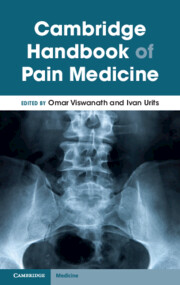Book contents
- Cambridge Handbook of Pain Medicine
- Cambridge Handbook of Pain Medicine
- Copyright page
- Contents
- Contributors
- Pain Handbook Introduction
- Part I Introduction to Pain: Pain Signaling Pathways
- Part II Common Categories of Pharmacologic Medications to Treat Chronic Pain
- Chapter 4 Nonsteroidal Anti-inflammatory Drugs (NSAIDs)
- Chapter 5 Acetaminophen
- Chapter 6 Topicals
- Chapter 7 Muscle Relaxants
- Chapter 8 Opioids
- Chapter 9 Antineuropathic Medications
- Chapter 10 Cannabinoids
- Part III Chronic Pain Conditions Head and Neck
- Part IV Spine
- Part V Extremities
- Part VI Misc
- Part VII Adjunctive Therapy
- Index
- References
Chapter 10 - Cannabinoids
from Part II - Common Categories of Pharmacologic Medications to Treat Chronic Pain
Published online by Cambridge University Press: 01 December 2023
- Cambridge Handbook of Pain Medicine
- Cambridge Handbook of Pain Medicine
- Copyright page
- Contents
- Contributors
- Pain Handbook Introduction
- Part I Introduction to Pain: Pain Signaling Pathways
- Part II Common Categories of Pharmacologic Medications to Treat Chronic Pain
- Chapter 4 Nonsteroidal Anti-inflammatory Drugs (NSAIDs)
- Chapter 5 Acetaminophen
- Chapter 6 Topicals
- Chapter 7 Muscle Relaxants
- Chapter 8 Opioids
- Chapter 9 Antineuropathic Medications
- Chapter 10 Cannabinoids
- Part III Chronic Pain Conditions Head and Neck
- Part IV Spine
- Part V Extremities
- Part VI Misc
- Part VII Adjunctive Therapy
- Index
- References
Summary
The use of cannabinoids and its derivatives for chronic pain is increasing. Two most well-known and clinically relevant forms of cannabinoids are delta-9-tetrahydrocannabinol (THC) and cannabidiol (CBD). The main receptor targeted are cannabinoid receptor 1 (CB1) and CB2. Indications for the utilization of THC are multiple sclerosis, cancer-related pain/cancer-related nausea and vomiting (anti-emetic), peripheral neuropathic pain, and HIV-associated weight loss.
- Type
- Chapter
- Information
- Cambridge Handbook of Pain Medicine , pp. 66 - 68Publisher: Cambridge University PressPrint publication year: 2023



